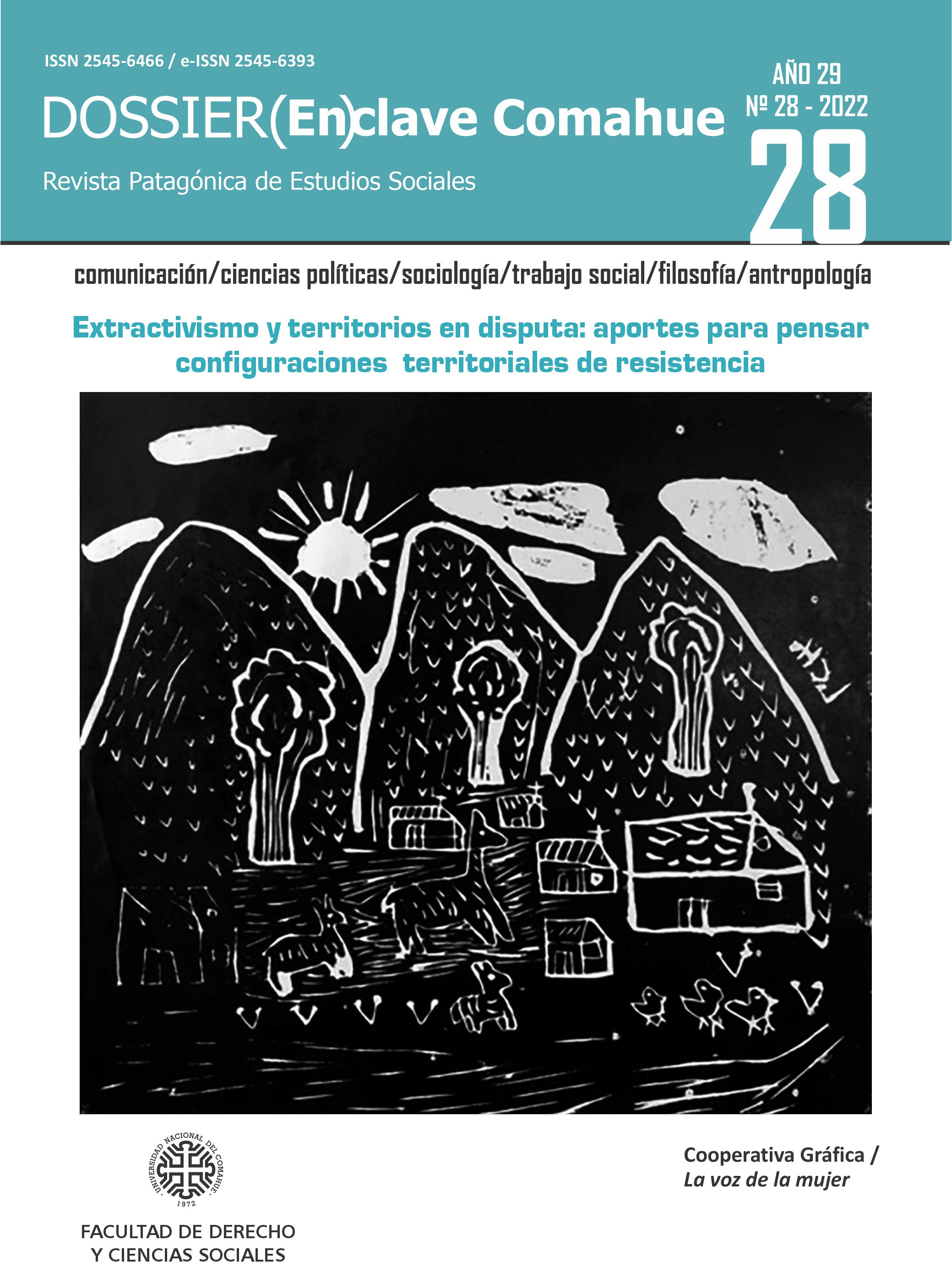The centrality of gender in anti-extractivist resistance by the Consejo Zonal Xawvn Ko
Abstract
This paper focuses on gender expressions and configurations in the anti-extractive resistances of the Consejo Zonal Xawvn Ko of the Confederación Mapuche de Neuquén due to the advance of the hydrocarbon industry during the last decade in the area renamed "Vaca Muerta". It starts by arguing that territorial defense in this location hbecome anti-extractivist resistance closely accompanied by Mapuche community and inter-community organizational processes and that gender in intersectionality is a dimension that characterizes and sets these processes in motion.
Based on ongoing ethnographic field work and anthropological work from within, the article recovers historical and contemporary situations as well as collective experiences related to territorial defense in Xawvn Ko, to observe how gender is expressed, what effects it has and how it affects organizational processes and resistance in contexts of high socio-environmental conflict.
Downloads
Downloads
Published
How to Cite
Issue
Section
License
Copyright (c) 2023 Melisa Cabrapan Duarte

This work is licensed under a Creative Commons Attribution-NonCommercial-ShareAlike 4.0 International License.
Los autores de los artículos publicados conservan los derechos de autor y garantizan a la revista el derecho a ser la primera publicación. Los autores podrán adoptar otros acuerdos de licencia no exclusiva de distribución de la versión de la obra publicada (p. ej.: depositarla en un repositorio institucional o en sus sitios personales) siempre que se indique la publicación inicial en esta revista.
Los artículos se publican bajo la licencia de Creative Commons Reconocimiento-NoComercial-CompartirIgual 4.0 Internacional, mediante la cual se permite copiar, reproducir, distribuir, comunicar públicamente la obra y generar obras derivadas, siempre y cuando se cite y reconozca al autor original. No se permite utilizar la obra ni sus posibles obras derivadas con fines comerciales.
ACLARACIÓN: En números anteriores al año 2017 se utilizó la licencia Creative Commons BY-NC-ND para la publicación de los artículos.







